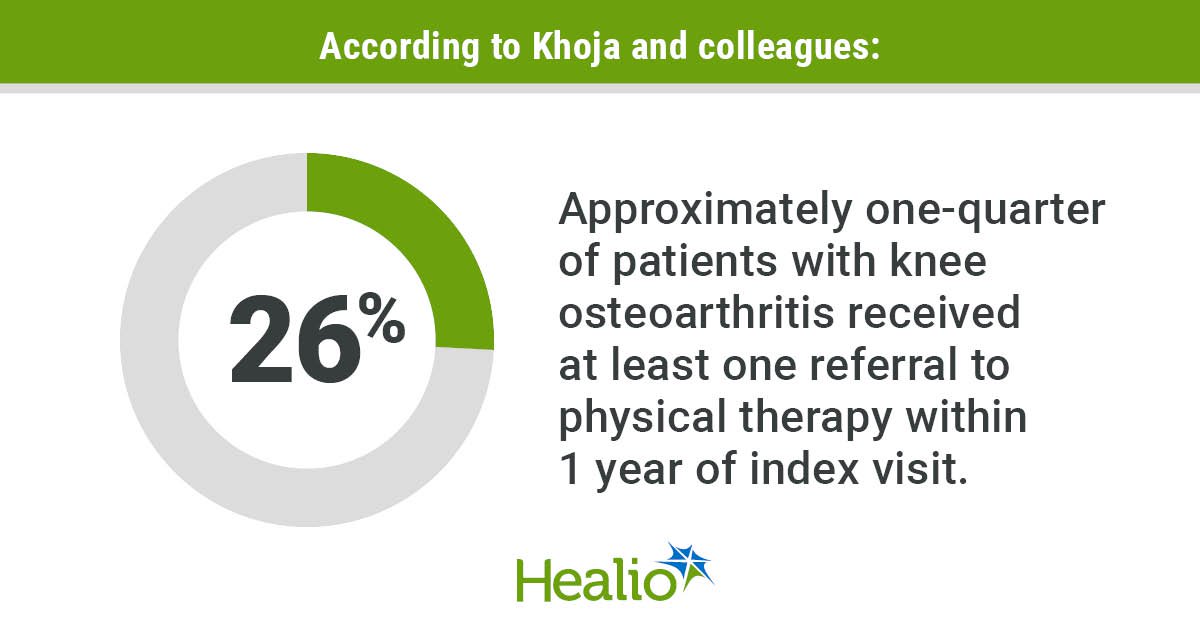October 07, 2025
2 min read
Key takeaways:
- GLP-1 receptor agonists have shown encouraging results in osteoarthritis.
- More studies are needed to clearly define the risks and benefits of the weight loss drugs in OA.
HUNTINGTON BEACH, Calif. — GLP-1 receptor agonists lead a new wave of therapeutic options that may benefit patients with osteoarthritis, according to data presented at the 2025 Congress of Clinical Rheumatology West.
“This field is so barren and the harvest is so small,” Anne Marie Malfait, MD, the George W. Stuppy, MD, chair of arthritis at Rush Medical College in Chicago, said of the current OA armamentarium. “It is actually a really important topic. It is the most common form of arthritis and the leading cause of pain and disability in the world.”

Despite this “urgent medical need,” there are still no FDA-approved, disease-modifying medications for OA, she added.
“Management options are currently really limited,” Malfait said. “We can only aim for symptomatic control.”
According to Malfait, as the rheumatology community moves beyond opioids and other methods of pain control, a new class of medications has emerged as a potential game-changer in the field: GLP-1 receptor agonists.
She highlighted the STEP-9 trial, in which a cohort of individuals with obesity and knee OA received weekly semaglutide (Ozempic, Novo Nordisk).
“It had a profound effect on pain,” Malfait said. “The effect was rapid on pain.”
This effect was not just related to weight loss, she added.
“There probably will be a lot of studies in the next few years,” she said.
However, despite this result — and the excitement surrounding the class in general — Malfait urged caution.
“The weight that is lost using these GLP-1 receptor agonists is comprised of fat, but also of muscle,” she said. “There are concerns about loss of lean muscle mass.”
The other concern is that when patients stop taking these medications, the weight comes back “rapidly,” according to Malfait.
“Does it come back as fat or muscle? Overall muscle loss is really important to consider in the context of osteoarthritis,” she said.
Another consideration is the role of exercise in conjunction with GLP-1 receptor agonism. “We need to understand how body composition will be affected,” Malfait said.
One more troubling signal emerged in the data regarding GLP-1 receptor agonists in OA, according to Malfait.
“Some studies have reported an increased number of total joint replacements in patients taking these medications, paradoxically,” she said. “It is not understood why.”
The hope is that these questions will be answered by more clinical trials. In the meantime, researchers have attempted to repurpose rheumatology mainstay medications like metformin and methotrexate in OA, with varying — and often disappointing — results.
If GLP-1 receptor agonism does not pan out as a breakthrough therapy, patients with OA may continue to feel left behind.
“Osteoarthritis is like the weather,” Malfait said. “Everybody talks about it, but nobody does anything about it. We are all trying very hard.”
For more information:
Anne Marie Malfait, MD, can be reached at rheumatology@healio.com.










